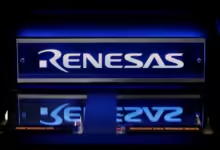Forget the metaverse, the Meetaverse is where your next meeting might be at

Walking around my own private convention hall, marveling at my own mostly minuscule accomplishments, I thought, “I could get used to hanging out here in the Meetaverse.”
Nope, that’s not a misspelling. Meetaverse, from Allseated, is a browser-based 3D meeting platform. Meetaverse builds these bespoke 3D spaces for conferences, companies, and meetings. Or it will, after the platform launches this week. The company told me it already has a catalog of hundreds of venues that they’ve 3D scanned and rendered and 10,000 3D objects they can drop into the 3D environment.


Not quite the metaverse
As the name suggests, the finished Meetaverse spaces have a metaverse flavor. They are 3D, virtual environments that include avatars, activations like articles you can dive into and read, videos you can watch, and, as I saw in my own space, details about the brand. To make me feel more at home, Meetaverse filled my space with details about me: there were walls with my photos, my social media stats, and articles I’ve written.
The avatars – including mine – looked like a cross between EVE from Pixar’s WALL-E, and a 1960s TV set. The top half of each avatar is filled with a screen featuring a live video feed for each meeting participant. There were also a bunch of NPC avatars floating around just to fill up the virtually cavernous space. Off to the left of my browser screen was a more traditional foursquare live video feed of me and the three Meetaverse representatives: Chief Marketing Officer Cal Nathan, Marketing Director Nick Borelli, and Project Facilitator Manager Lauren Holley.

Unlike the metaverse, Meetaverse is designed for browsers and not VR headsets (though Mettaverse did work on Oculus-friendly versions for a while). They want it to work on any browser, but told me that, for now, the experience is best on Chrome. Watching the platform build my 3D Meetaverse space reminded me of VR 1.0 meeting rooms of the late 1990s. Still, the graphics and movements through those spaces were never this good.
While not exactly a realistic rendering of a conference hall, the Meetaverse does look good and well-laid out. There was an entry space, a welcome section, breakout rooms with semi-translucent glass walls, and a large presentation space.
First, I tried using the on-screen navigations buttons and then my mouse to move about but it was difficult to control my movements. At the Meetaverse exec’s suggestion, I switched to the arrow keys on my laptop and found movement intuitive and relatively smooth. I didn’t like, though, how after you let go of an arrow key, you kept moving a virtual step or two – the execs insisted this was by design.
Even though you can walk through solid objects (again, another conscious design decision), there’s no way of quickly teleporting from one spot in the Meetaverse to another (you can dial in and out of entire Meetaverses events or meetings, though). I wondered if, in the case of a busy Meetaverse trade show, you could hit the tab key and jump from one booth to another. Borelli insisted that will kill some of the serendipity of the system.

While my demo space was a conference hall, Holly told me the first use case is just meetings, much like the ones you might have in Zoom or Google Meet. I asked them if their approach is overkill.
“It is more on the line of experiential than other platforms you mention. Adding more experiential elements facilitates more of the oasis away from those types of atmospheres [ike static Zoom and Google Meet].” said Meetaverse’s Nick Borelli.
Okay, sure. I can see Meetaverse making a meeting more fun, but all that 3D and oddball avatars can get a little distracting.
Meetaverse can build an environment in three-to-four weeks and will charge $15 a head (with a minimum of 500 users). The per-seat price drops if you sign up for more than a year.
In the meantime, I need to find out if I can start giving tours of my own Meetaverse.








